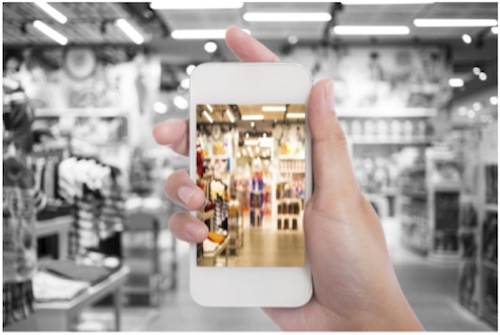
No matter what type of business you currently operate, or plan to open, in this day and age it’s important to keep up with the advances in technology that are changing the way companies interact with, and sell to, consumers.
New technologies haven’t just created whole new industries, products, and services, but also put more information and power in buyers’ hands than ever before. Today, consumers want to be able to pay for goods how, when, and where they choose to, as well as receive information that has been personally customized just for them.
The prevalence of smartphones, in particular, has really led to a variety of new marketing and sales techniques that are beneficial for both customers and businesses. Organizations can now make it easy for consumers to purchase at any location by using the best mobile credit card processing, as well as send customers specifically targeted information, rewards, tips and more.
If you want to get in on the mobile payments action, now is definitely the time. Read on for the lowdown on how you can best use smartphones and related apps in your business today.
Take Payments Anywhere, Anytime
The premier benefit of using mobile payment services in business is that you can easily process transactions anywhere, and at anytime. In the past, many small businesses were either unable to accept credit card payments due to their remote location (such as at a farmers’ market, a conference, tradeshow, in-home consultation, food truck, pop-up shop, and the like), or because it was too expensive or difficult to set up an appropriate point-of-sale machine. Today, you can accept payments from your smartphone at the click of a few buttons, and for a very affordable price.
By integrating mobile payments into your business plan you can not only increase your customer base, but also your conversion rate, since so many people now prefer to pay by card rather than cash (indeed, many consumers don’t bother carrying much cash at all on them in this day and age).
In addition, mobile payments even come in hand in traditional store environments during busy periods like Christmas. Rather than keeping customers waiting in long lines for standard registers, you can implement extra payment avenues through smartphones and not only process more transactions, but also keep customers happy because they don’t have to wait for long. This works incredibly well not just for retail outlets but also places like restaurants and coffee shops at busy times of day.

Provide Better Customer Service and Fulfillment
Utilizing mobile apps also allows you to provide better customer service in areas such as helping shoppers to find what they’re looking for more quickly, and suggesting other items that they may like. Mobile apps can be used, for example, to essentially act as personal shopping assistants within stores, directing customers to products they’re interested in within a physical store, and/or providing additional information on each item.
Lowe’s is one company making effective use of “product locator” mobile technology to make customers happy. With stores reaching up to 100,000 square feet, shoppers in the past likely often had difficulty finding many products in a suitable timeframe. Now though, customers can find more than 100 million specific locations in the stores via customized, interactive maps that can be browsed on smartphones.
Customers (and businesses) can also benefit from using mobile apps to track inventory levels and consumer shopping trends. Mobile payment systems can be used to understand which products and services are selling best within a set period so that inventory or supplies can be increased or relocated to better suit customer needs. This allows businesses to improve their customer service while at the same time increasing sales and making best use of inventory.
Use Specialized Marketing Strategies
The development of mobile marketing and payment options also makes it easier than ever to market effectively to current and potential consumers. For example, loyalty programs are a popular marketing device used by many companies, but often don’t work as well as they could due to the fact that consumers must try to keep track of punch cards, key ring tags, shopper dockets, and the like in order to take advantage of discounts and rewards.
By using mobile payment systems, businesses can make it easy and convenient for customers to enjoy added value. Loyalty information can be tracked and stored in mobile applications each time that shoppers make a purchase using a smartphone, rather than on external cards that customers have to keep on them at all times. This seamless loyalty experience will then, in turn, make consumers more likely to return to the store in the future.
